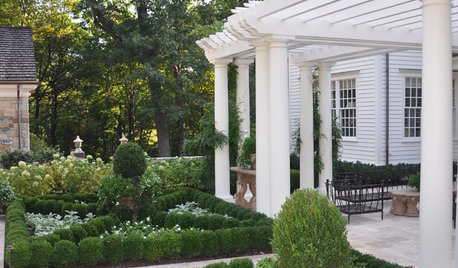Planning ahead for new garden: crop rotation question (picture)
emmie9999
16 years ago
Related Stories

EDIBLE GARDENSHow to Grow Your Own Sweet Summer Crops
This guide will help any gardener get started on growing the freshest warm-season veggies and berries for summer
Full Story
KITCHEN DESIGN9 Questions to Ask When Planning a Kitchen Pantry
Avoid blunders and get the storage space and layout you need by asking these questions before you begin
Full Story
SUMMER FRUITS AND VEGETABLESHow to Grow Your Own Fresh, Sweet Corn
Here's how to plant and care for your own mini cornfield
Full Story
EDIBLE GARDENSSummer Crops: How to Grow Tomatoes
Plant tomato seedlings in spring for one of the best tastes of summer, fresh from your backyard
Full Story
FARM YOUR YARDIf You Have Room for Only One Summer Crop ...
Get an edible that’s long on flavor even if you’re short on space, with a long-time gardener’s favorite picks
Full Story
GARDENING AND LANDSCAPINGCream-of-the-Crop Vegetable Gardens
Both trendy and traditional, these inspired potager designs turn the everyday vegetable garden into art for your landscape
Full Story
REMODELING GUIDESSurvive Your Home Remodel: 11 Must-Ask Questions
Plan ahead to keep minor hassles from turning into major headaches during an extensive renovation
Full Story
REMODELING GUIDESConsidering a Fixer-Upper? 15 Questions to Ask First
Learn about the hidden costs and treasures of older homes to avoid budget surprises and accidentally tossing valuable features
Full Story
ORGANIZINGPre-Storage Checklist: 10 Questions to Ask Yourself Before You Store
Wait, stop. Do you really need to keep that item you’re about to put into storage?
Full Story
FEEL-GOOD HOMEThe Question That Can Make You Love Your Home More
Change your relationship with your house for the better by focusing on the answer to something designers often ask
Full Story





jbann23
anney
Related Professionals
Clemson Landscape Architects & Landscape Designers · Foothill Ranch Landscape Architects & Landscape Designers · Middle Island Landscape Architects & Landscape Designers · River Forest Landscape Architects & Landscape Designers · Bell Gardens Landscape Contractors · Fort Hunt Landscape Contractors · Garland Landscape Contractors · Haverhill Landscape Contractors · Live Oak Landscape Contractors · Monterey Landscape Contractors · Nashua Landscape Contractors · Natick Landscape Contractors · Riverhead Landscape Contractors · Soddy Daisy Landscape Contractors · South Hackensack Landscape Contractorsanney
lonmower
emmie9999Original Author
ruthieg__tx
paulc_gardener
bb
anney
emmie9999Original Author
iacche
paulc_gardener
lilacs_of_may
chaman